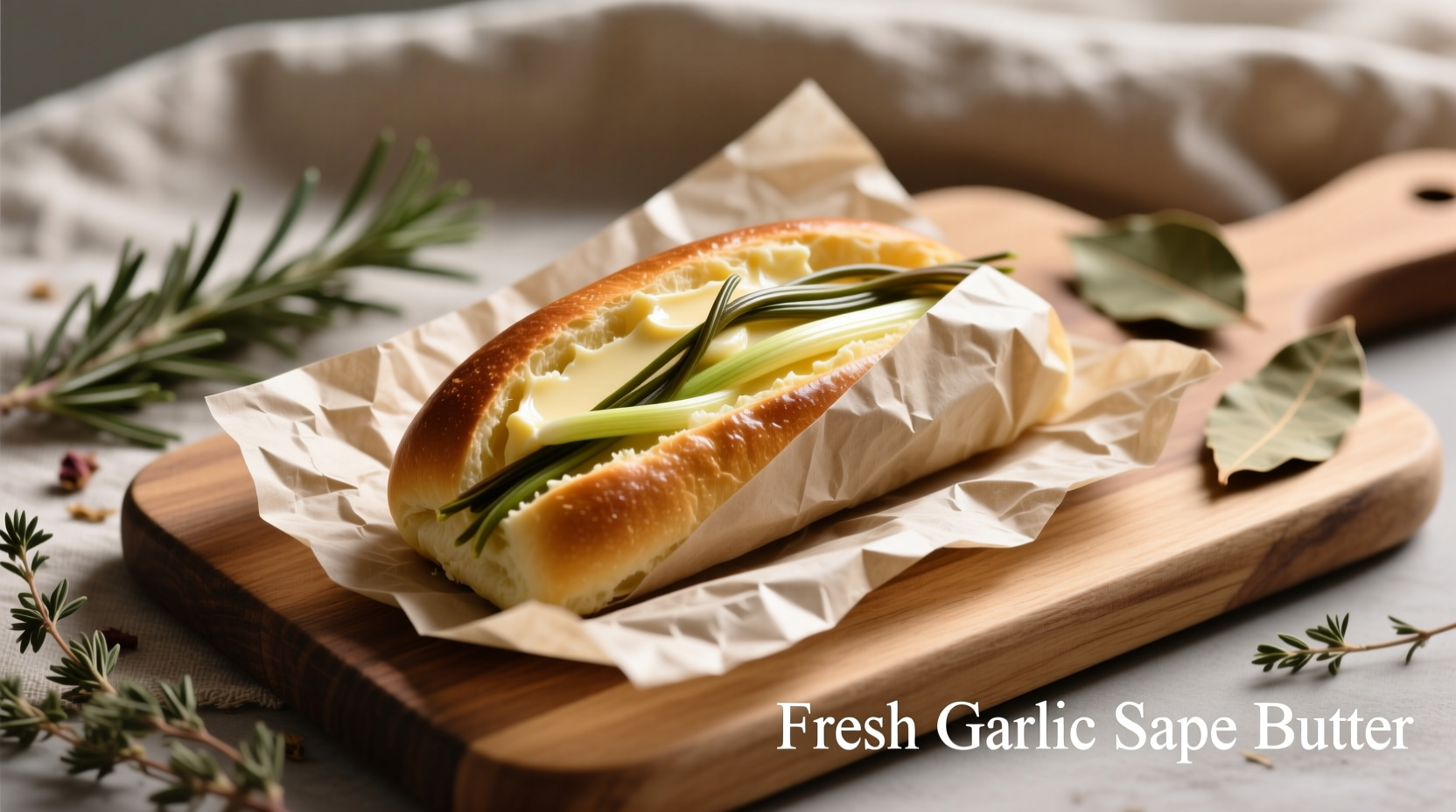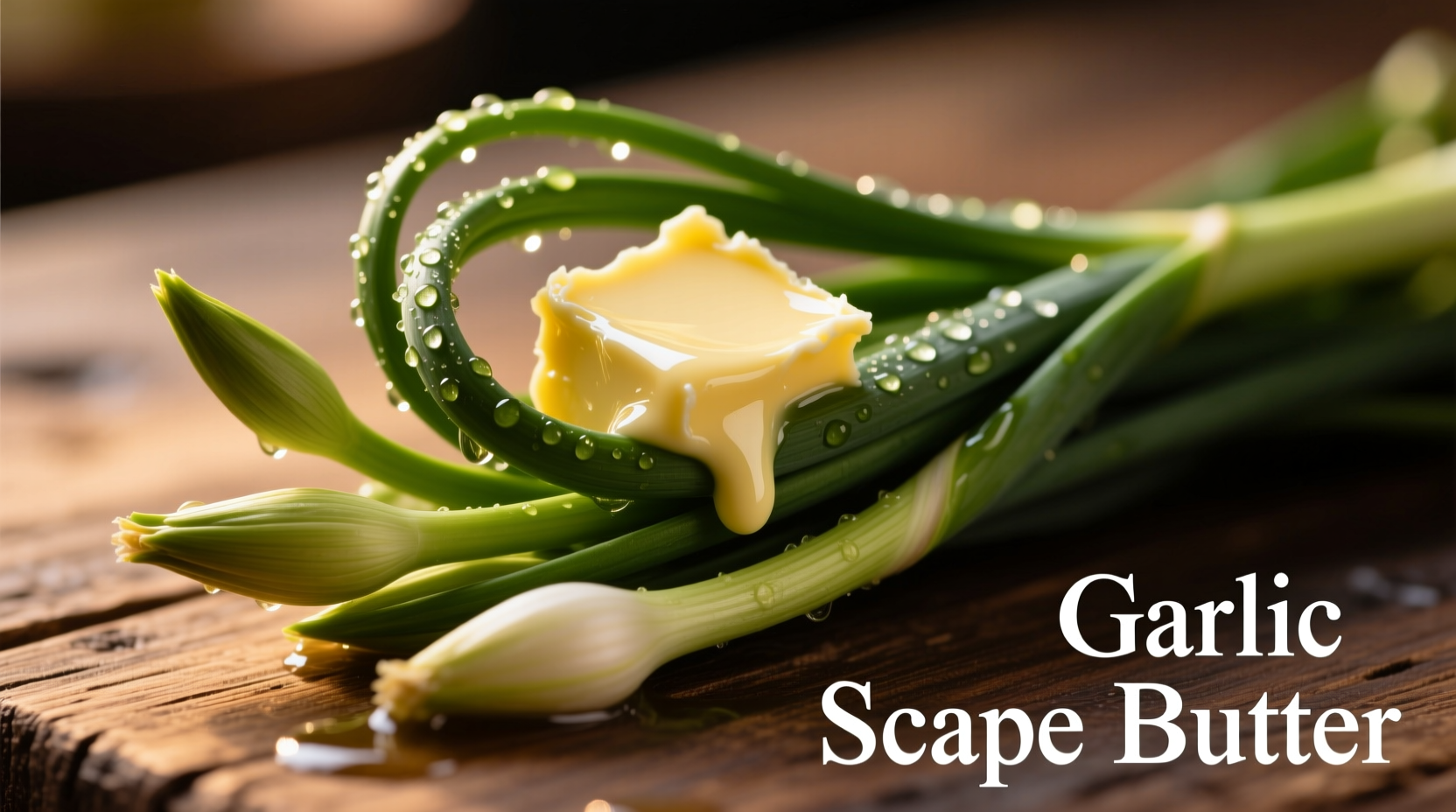Garlic scape butter transforms seasonal garlic scapes into a versatile compound butter ready in 20 minutes, perfect for elevating grilled meats, roasted vegetables, and artisan breads with a milder garlic flavor than traditional clove-based preparations.
Discover how this seasonal kitchen staple captures the fleeting essence of garlic scapes while offering year-round culinary possibilities through simple preservation techniques. Whether you're a home cook looking to maximize your farmers' market finds or a culinary enthusiast exploring seasonal ingredients, this guide delivers actionable techniques used by professional kitchens.
What Exactly Are Garlic Scapes?
Garlic scapes represent the curly flowering stalks of hardneck garlic varieties, typically harvested in late spring to early summer before they mature into seed pods. Unlike pungent garlic cloves, these tender stalks offer a subtle garlic flavor with grassy, vegetal notes that won't overpower delicate dishes.
| Characteristic | Garlic Scapes | Garlic Cloves |
|---|---|---|
| Harvest Season | Late spring to early summer (May-July) | Fall (September-November) |
| Flavor Profile | Mild, grassy, subtle garlic | Sharp, pungent, intense |
| Texture | Tender when young, becomes fibrous | Firm, dense |
| Best Culinary Uses | Raw applications, quick cooking | Longer cooking, flavor foundation |
Why Garlic Scape Butter Deserves Your Attention
Professional chefs prize garlic scape butter for its balanced flavor profile that enhances rather than dominates dishes. The USDA Agricultural Research Service confirms that garlic scapes contain allicin compounds similar to garlic cloves but in lower concentrations, creating a more nuanced flavor experience perfect for dishes where subtlety matters.
Unlike traditional garlic butter that can turn bitter when cooked, garlic scape butter maintains its delicate flavor through various cooking methods. This makes it particularly valuable for spring and early summer menus when fresh scapes are available.
Your Step-by-Step Garlic Scape Butter Guide
Follow this professional kitchen-tested method for compound butter that preserves maximum flavor:
- Prep 8-10 fresh garlic scapes by trimming tough ends and blossom tips
- Blanch for 60 seconds in boiling water, then immediately transfer to ice water
- Pat completely dry and finely mince (moisture is butter's enemy)
- Combine with 1 cup softened unsalted butter, 1 tbsp lemon zest, and 1/4 tsp sea salt
- Mix thoroughly using a spatula, not a blender (aeration causes separation)
- Roll into a log using parchment paper for easy portioning

Culinary Applications That Shine
Move beyond basic bread spreading with these chef-recommended techniques:
- Finishing steak: Place a coin-sized portion on grilled ribeye during resting
- Pasta enhancement: Swirl into finished pasta dishes off-heat
- Vegetable booster: Toss with roasted asparagus or green beans
- Soup garnish: Float a small dollop on tomato or potato soup
- Seafood companion: Melt over pan-seared scallops
Preservation Techniques for Year-Round Enjoyment
Garlic scapes have a narrow seasonal window, but proper preservation extends their enjoyment. According to research from Cornell University's Department of Food Science, freezing compound butter in ice cube trays then transferring to airtight containers maintains flavor integrity for up to 6 months.
For best results:
- Portion into tablespoon-sized servings for recipe accuracy
- Remove all air from storage bags using the water displacement method
- Label with date and intended use ("pasta," "steak," etc.)
- Thaw overnight in refrigerator rather than at room temperature
Seasonal Availability and Sourcing Tips
Garlic scapes typically appear at farmers' markets from late May through June in most North American growing regions. The Agricultural Marketing Resource Center notes that hardneck garlic varieties produce scapes while softneck varieties (common in grocery stores) do not.
When selecting scapes:
- Choose firm, bright green stalks without yellowing
- Opt for medium thickness (too thin indicates immaturity, too thick means toughness)
- Look for tight, closed blossom tips (open flowers indicate over-maturity)
- Store unwashed in a loosely closed plastic bag for up to 2 weeks
Common Questions About Garlic Scape Butter
Can I use garlic scapes raw in compound butter?
Yes, but blanching first preserves vibrant color and mellows any potential bitterness. Raw scapes work well in immediate-use butter, but blanched versions maintain better quality during storage.
How does garlic scape butter differ from regular garlic butter?
Garlic scape butter offers a more subtle, grassy flavor profile compared to the intense pungency of clove-based butter. It contains lower concentrations of allicin compounds, making it suitable for dishes where garlic should complement rather than dominate.
What's the best way to substitute garlic scapes if unavailable?
Use a combination of 2 parts green garlic (young garlic plants) and 1 part chive blossoms for closest flavor approximation. Avoid regular garlic cloves as direct substitutes—they create a completely different flavor profile unsuitable for delicate spring dishes.
Can I add other ingredients to customize my garlic scape butter?
Absolutely. Try adding lemon zest for brightness, smoked paprika for depth, or fresh herbs like parsley or chives. For steak applications, a touch of Worcestershire sauce enhances umami. Always add acidic components after the butter has cooled slightly to preserve flavor integrity.











 浙公网安备
33010002000092号
浙公网安备
33010002000092号 浙B2-20120091-4
浙B2-20120091-4